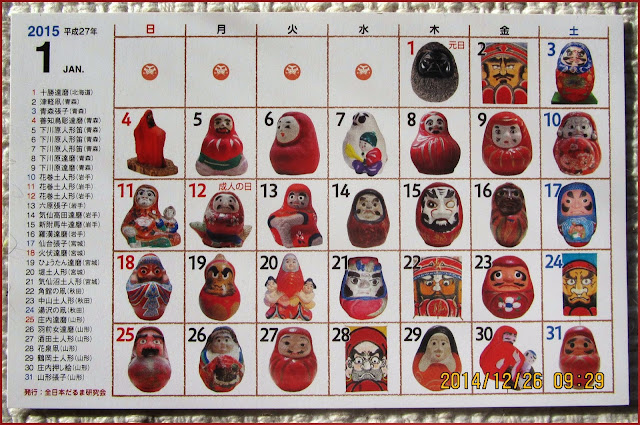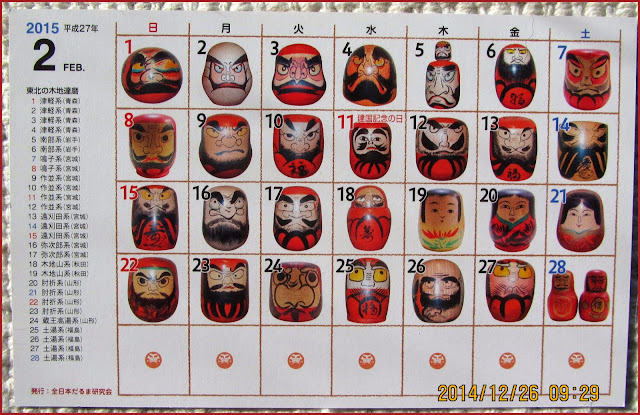LINK
http://darumapilgrim.blogspot.jp/2011/12/daishoin-miyajima.html
:::::::::::::::::::::::::::::::::::::::::::::::::::::::::::::::::::::::::::::::::::::::::::::::::::::
Daishoo-In 大聖院 Daisho-In
Daishooin
大聖院は広島県廿日市市宮島町 Hiroshima, Hatsukaichi town
Chokugan Doo Hall 勅願堂(ちょくがんどう)

with Namikiri Fudo 波切不動明王
wave-cutting Fudo
Hideyoshi had taken this statue on board of his ship and he offered prayers for safety and success in war when he dispatched troops to invade Korea.

Gosanze Myo-O
Kannon Do Hall 観音堂(かんのんどう)
Henrjoo kutsu 遍照窟 Kobo Daishi Cave
Daishi Do 大師堂 Kobo Daishi Hall
Reihokan 霊宝館 Museum
source : www.miyajima-wch.jp
Yearly Festivals
Setsubun 節分厄除開運星祭
Hocho Kuyo 庖丁供養 for knives
hiwatari shinji 火渡り神事 walking through fire
and many more
source : www.galilei.ne.jp/daisyoin

CLICK for more photos !
:::::::::::::::::::::::::::::::::::::::::::::::::::::::::::::::::::::::::::::::::::::::::::::::::::::

Daishi Darani joo 大師陀羅尼錠 Daishi Darani Medicine
for stomach ailments
originate from Miyajima
:::::::::::::::::::::::::::::::::::::::::::::::::::::::::::::::::::::::::::::::::::::::::::::::::::::

Fudo, the Protector of Miyajima
. Fudō Myō-ō, Fudoo Myoo-Oo 不動明王 Fudo Myo-O
Acala Vidyârâja – Vidyaraja – Fudo Myoo .
.......................................................................
Daishō-in or Daisyō-in (大聖院)
is a historic Japanese temple on Mt.Misen, the holy mountain in the island of Itsukushima in Miyajima-chō in the city of Hatsukaichi, Hiroshima, Japan. It is the 14th of Chūgoku 33 Kannon Pilgrimage and famous for autumn leaves and maples. It has another temple name called "Suishō-ji" (水精寺). Including Mt.Misen, Daishō-in is within the World Heritage Area of Itsukushima Shrine.
In this temple there is a flame is which is said to have been burning since its foundation, for more than 1200 years.
Daishō-in was founded by the monk Kūkai, also known posthumously as Kōbō-Daishi (弘法大師), in the year 806, the 1st year of the Daidō era.
Kūkai was one of the most famous monks in Japan and the founder of Shingon Buddhism.
So, it's the head temple of one of the denominations of Shingon Buddhism and the oldest temple in Itsukushima.
An Imperial order by Emperor Toba, it was the place to pray for the peace and security of the nation.
Emperor Meiji was staied on July 31, 1885 for his visit to Itsukushima Shrine.
Repair work for the trail to Mt.Misen was finished in 1905.
It was done by the donation of Itō Hirobumi.
Heavy damage by 19th typhoon on September 27, 1991.
Held a memorial service to congratulate the restoration of the damage on October 10, 1998.
The 14th Dalai Lama visited Itsukushima to celebrate the 1200th-year of Daishō-in from the 3rd to 8th of November in 2006.

魔尼殿 Maniden hall
There are also many buildings, gates of the temple and many statues of Kannon, Jūichimen Kannon, Acala and Seven Lucky Gods on and around Mt.Misen.
© More in the WIKIPEDIA !
:::::::::::::::::::::::::::::::::::::::::::::::::::::::::::::::::::::::::::::::::::::::::::::::::::::

Doll Exhibition of Tsujimura Shusaburo
辻村寿三郎人形展, 2008
宮島・大聖院
:::::::::::::::::::::::::::::::::::::::::::::::::::::::::::::::::::::::::::::::::::::::::::::::::::::
Goosanze (Gosanze, Goozanze; Trailokyavijaya)

Temple Daigo-Ji 醍醐寺 Kyoto
"Der Besieger der drei Welten".
Im Sutra Dainichikyoo auch als "Shoosanze" bezeichnet.
Besiegt die drei Grundübel des fleischlichen Leibes: Gier, Haß und Unwissenheit.
Inkarnation des Dainichi Nyorai in der Diamantwelt, zusammen mit Fudoo Myo-O in der Mutterschoßwelt. Auch Inkarnation des Ashuku Nyorai, des Fugen Bosatsu und des Kongoo Satta. Gefolgsmann bzw. Inkarnation des Monju Bosatsu.
Im Volk verehrt als Gottheit der Wasserbüffel und Rinder.
Im Osten bei fünf Statuen.
Ikonografie:
Grünblaue Körperfarbe. Drei Köpfe, acht Arme; die Kleinfinger der mittleren Hände in spezifischer Geste verschlungen.
Selten gibt es auch Statuen mit einem Kopf und zwei Armen oder vier Köpfen und acht Armen.
Der Gürtel wird von einem Löwenkopf gehalten (shikami).
Um die Hüften einen Lendenschurz aus Tigerfell (kohikun).
In den rechten Händen: Diamant-Glocke (kongootaku), Schatz-Pfeil (hoosen), Schwert.
In den linken Händen: Dreizackige Hellebarde, Schatz-Bogen (hookyuu), Seil.
Die mittleren Hände in der typischen Goosanze-Haltung.
Trampelt auf der hinduistischen Gottheit Shiva und seiner Frau (Daijizaiten und Umakoo), die auf einem flachen Felssockel liegen.
In der Abteilung "Jimyooin" des Mandalas der Mutterschoßwelt wird Goosanze im Zentrum mit drei Köpfen und acht Armen dargestellt.
. Buddhastatuen ... Who is Who .
Ein Wegweiser zur Ikonografie
von japanischen Buddhastatuen
Gabi Greve, 1994

Gōzanze 降三世明王 (Skt. Trilokavijaya)
The "one who subjugates the three worlds." Three threatening faces; eight arms; the enemy of foolishness and anger. Carries "Arrow of Mercy" to shoot at people who stray from path toward enlightenment; stands on two other deities, Daijizaiten 大自在天 and Daijizaiten's consort Uma 烏摩, who he converts into Buddhist protectors.
English Details are here:
- Mark Schumacher -
:::::::::::::::::::::::::::::::::::::::::::::::::::::::::::::::::::::::::::::::::::::::::::::::::::::
. Festivals, Ceremonies, Rituals - SAIJIKI .
. Amulets and Talismans from Japan .
[ . BACK to WORLDKIGO TOP . ]
[ . BACK to DARUMA MUSEUM TOP . ]
:::::::::::::::::::::::::::::::::::::::::::::::::::::::::::::::::::::::::::::::::::::::::::::::::::::
http://darumapilgrim.blogspot.jp/2011/12/daishoin-miyajima.html
:::::::::::::::::::::::::::::::::::::::::::::::::::::::::::::::::::::::::::::::::::::::::::::::::::::
Daishoo-In 大聖院 Daisho-In
Daishooin
大聖院は広島県廿日市市宮島町 Hiroshima, Hatsukaichi town
Chokugan Doo Hall 勅願堂(ちょくがんどう)

with Namikiri Fudo 波切不動明王
wave-cutting Fudo
Hideyoshi had taken this statue on board of his ship and he offered prayers for safety and success in war when he dispatched troops to invade Korea.

Gosanze Myo-O
Kannon Do Hall 観音堂(かんのんどう)
Henrjoo kutsu 遍照窟 Kobo Daishi Cave
Daishi Do 大師堂 Kobo Daishi Hall
Reihokan 霊宝館 Museum
source : www.miyajima-wch.jp
Yearly Festivals
Setsubun 節分厄除開運星祭
Hocho Kuyo 庖丁供養 for knives
hiwatari shinji 火渡り神事 walking through fire
and many more
source : www.galilei.ne.jp/daisyoin

CLICK for more photos !
:::::::::::::::::::::::::::::::::::::::::::::::::::::::::::::::::::::::::::::::::::::::::::::::::::::

Daishi Darani joo 大師陀羅尼錠 Daishi Darani Medicine
for stomach ailments
originate from Miyajima
:::::::::::::::::::::::::::::::::::::::::::::::::::::::::::::::::::::::::::::::::::::::::::::::::::::

Fudo, the Protector of Miyajima
. Fudō Myō-ō, Fudoo Myoo-Oo 不動明王 Fudo Myo-O
Acala Vidyârâja – Vidyaraja – Fudo Myoo .
.......................................................................
Daishō-in or Daisyō-in (大聖院)
is a historic Japanese temple on Mt.Misen, the holy mountain in the island of Itsukushima in Miyajima-chō in the city of Hatsukaichi, Hiroshima, Japan. It is the 14th of Chūgoku 33 Kannon Pilgrimage and famous for autumn leaves and maples. It has another temple name called "Suishō-ji" (水精寺). Including Mt.Misen, Daishō-in is within the World Heritage Area of Itsukushima Shrine.
In this temple there is a flame is which is said to have been burning since its foundation, for more than 1200 years.
Daishō-in was founded by the monk Kūkai, also known posthumously as Kōbō-Daishi (弘法大師), in the year 806, the 1st year of the Daidō era.
Kūkai was one of the most famous monks in Japan and the founder of Shingon Buddhism.
So, it's the head temple of one of the denominations of Shingon Buddhism and the oldest temple in Itsukushima.
An Imperial order by Emperor Toba, it was the place to pray for the peace and security of the nation.
Emperor Meiji was staied on July 31, 1885 for his visit to Itsukushima Shrine.
Repair work for the trail to Mt.Misen was finished in 1905.
It was done by the donation of Itō Hirobumi.
Heavy damage by 19th typhoon on September 27, 1991.
Held a memorial service to congratulate the restoration of the damage on October 10, 1998.
The 14th Dalai Lama visited Itsukushima to celebrate the 1200th-year of Daishō-in from the 3rd to 8th of November in 2006.

魔尼殿 Maniden hall
There are also many buildings, gates of the temple and many statues of Kannon, Jūichimen Kannon, Acala and Seven Lucky Gods on and around Mt.Misen.
© More in the WIKIPEDIA !
:::::::::::::::::::::::::::::::::::::::::::::::::::::::::::::::::::::::::::::::::::::::::::::::::::::

Doll Exhibition of Tsujimura Shusaburo
辻村寿三郎人形展, 2008
宮島・大聖院
:::::::::::::::::::::::::::::::::::::::::::::::::::::::::::::::::::::::::::::::::::::::::::::::::::::
Goosanze (Gosanze, Goozanze; Trailokyavijaya)

Temple Daigo-Ji 醍醐寺 Kyoto
"Der Besieger der drei Welten".
Im Sutra Dainichikyoo auch als "Shoosanze" bezeichnet.
Besiegt die drei Grundübel des fleischlichen Leibes: Gier, Haß und Unwissenheit.
Inkarnation des Dainichi Nyorai in der Diamantwelt, zusammen mit Fudoo Myo-O in der Mutterschoßwelt. Auch Inkarnation des Ashuku Nyorai, des Fugen Bosatsu und des Kongoo Satta. Gefolgsmann bzw. Inkarnation des Monju Bosatsu.
Im Volk verehrt als Gottheit der Wasserbüffel und Rinder.
Im Osten bei fünf Statuen.
Ikonografie:
Grünblaue Körperfarbe. Drei Köpfe, acht Arme; die Kleinfinger der mittleren Hände in spezifischer Geste verschlungen.
Selten gibt es auch Statuen mit einem Kopf und zwei Armen oder vier Köpfen und acht Armen.
Der Gürtel wird von einem Löwenkopf gehalten (shikami).
Um die Hüften einen Lendenschurz aus Tigerfell (kohikun).
In den rechten Händen: Diamant-Glocke (kongootaku), Schatz-Pfeil (hoosen), Schwert.
In den linken Händen: Dreizackige Hellebarde, Schatz-Bogen (hookyuu), Seil.
Die mittleren Hände in der typischen Goosanze-Haltung.
Trampelt auf der hinduistischen Gottheit Shiva und seiner Frau (Daijizaiten und Umakoo), die auf einem flachen Felssockel liegen.
In der Abteilung "Jimyooin" des Mandalas der Mutterschoßwelt wird Goosanze im Zentrum mit drei Köpfen und acht Armen dargestellt.
. Buddhastatuen ... Who is Who .
Ein Wegweiser zur Ikonografie
von japanischen Buddhastatuen
Gabi Greve, 1994

Gōzanze 降三世明王 (Skt. Trilokavijaya)
The "one who subjugates the three worlds." Three threatening faces; eight arms; the enemy of foolishness and anger. Carries "Arrow of Mercy" to shoot at people who stray from path toward enlightenment; stands on two other deities, Daijizaiten 大自在天 and Daijizaiten's consort Uma 烏摩, who he converts into Buddhist protectors.
English Details are here:
- Mark Schumacher -
:::::::::::::::::::::::::::::::::::::::::::::::::::::::::::::::::::::::::::::::::::::::::::::::::::::
. Festivals, Ceremonies, Rituals - SAIJIKI .
. Amulets and Talismans from Japan .
[ . BACK to WORLDKIGO TOP . ]
[ . BACK to DARUMA MUSEUM TOP . ]
:::::::::::::::::::::::::::::::::::::::::::::::::::::::::::::::::::::::::::::::::::::::::::::::::::::











































